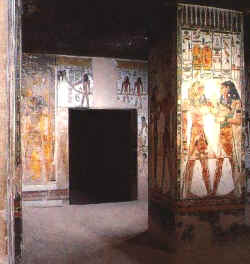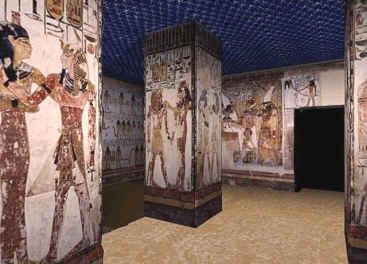![]()
Valley of the Kings - KV17
tomb of Seti I - XIXth Dynasty
|
Over 100 m long tomb of pharaoh Seti I was discovered in October 1817 by Giovanni Belzoni. The tomb of Seti I represents the fullest development of royal tomb in New Kingdom. It is also the longest, deepest and most completely finished of all the tombs in the valley. It is thoroughly covered with numerous decorations. In the funerary chamber Belzoni was found anthropoid calcite sarcophagus and fragment of canopic chest, now in the Soane Museum in London. Under dynasty XXI the tomb of Seti served for short time as a cache for mummies of Ramesses I and II. In year 10 of Siamon rule these mummies, together with that of Seti, were moved to the Deir el-Bahari cache DB320.
|
 |
 |
![]()
|
Copyright © 2000-2013 Dariusz Sitek, Czestochowa - Chicago - Ann Arbor |